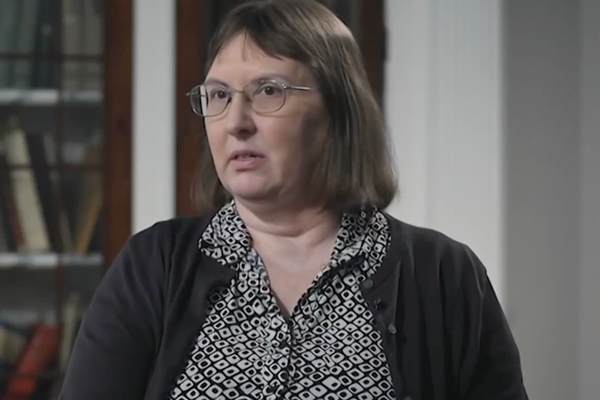WASHINGTON — As one longtime congressional staffer told us years ago: Sen. Richard C. Shelby “usually gets what he wants.”
Now, as appropriations earmarks have returned after a dozen years’ hiatus, the retiring Alabama senator has delivered once more for his state — with over a half-billion dollars’ worth of “congressionally directed spending” in the $1.5 trillion fiscal 2022 omnibus bill that President Joe Biden signed Tuesday.
Shelby, the top Republican on Senate Appropriations, blew away the rest of the field by securing more than $548 million in home-state projects in this year’s spending bills — not counting $3 million for which he shared credit with Rep. Jerry Carl, R-Ala.
Sen. Lindsey Graham, R-S.C., another senior appropriator, was No. 2 overall, with about $334 million worth of solo requests that made it into the package, a CQ Roll Call analysis found.
Senate Labor-HHS-Education ranking member Roy Blunt, R-Mo., came in third at $265 million; $181 million was in his own subcommittee bill. In all, Blunt — who, like Shelby, is retiring after this Congress — accounted for about 10 percent of total dollars earmarked in the Labor-HHS-Education bill.
Alaska Sen. Lisa Murkowski, the top Republican on Interior-Environment Appropriations, was next with almost $225 million. Little Vermont punched above its weight, with Senate Appropriations Chairman Patrick J. Leahy, D-Vt. — also retiring after this year — rounding out the top five.
The top 10 senators bringing home earmarks are Appropriations Committee members, as are 16 of the top 20. Two of the four who aren’t on that panel — GOP Sens. James M. Inhofe of Oklahoma and Richard M. Burr of North Carolina — are retiring. The others are Georgia’s Raphael Warnock, a freshman considered one of the most vulnerable Democrats in the midterms, and Colorado’s Michael Bennet, also up for reelection but considered a safer bet to win.
Texas, Florida on top in House
Senators generally got more money per capita than House members, given they represent much greater populations. Senate Republicans, in particular, scored large hauls; only 16 of their caucus requested earmarks, so there was more to spread around.
House members from Texas and Florida, populous states whose senators didn’t request earmarks, dominated the top of the list.
Leading the pack was Rep. Tony Gonzales, R-Texas, a freshman who won a tough race in 2020 and was promptly given a rare first-term appointment to the Appropriations Committee. Gonzales’ $38.9 million in solo requests that made it into the final bill include $32 million for a child development center and vehicle maintenance shop at Joint Base San Antonio in the Military Construction-VA bill.
Texas Republican Daniel Crenshaw was third, followed by Sheila Jackson Lee, a Texas Democrat, and two Florida Republicans, Brian Mast and Carlos Gimenez.
House Armed Services ranking Republican Mike D. Rogers, R-Ala., was No. 2 at $28.4 million, largely due to $25 million he got in the Military Construction-VA bill to build a welding facility at Anniston Army Depot — a rare Alabama project Shelby didn’t also have his name on.
In states where House lawmakers had senators who cosponsored project requests, House members are given credit for requests that made it into initial House bills and the final omnibus but weren’t in the initial Senate versions.
Lee Zeldin, R-N.Y., a gubernatorial candidate, came in in seventh place. His total includes projects Democratic senators Kirsten Gillibrand and Majority Leader Charles E. Schumer also requested but didn’t get approved initially. Mike Levin, D-Calif., a party “Frontline” program member with a tough race looming this November, was eighth.
Other notables among the top 20 House earmarkers include Frontliners Matt Cartwright, D-Pa., who leads the Commerce-Justice-Science Appropriations Subcommittee, and Elaine Luria, D-Va. New York’s Sean Patrick Maloney, head of the Democratic Congressional Campaign Committee and himself a GOP target in November, is also on the list, as is Henry Cuellar, D-Texas, who faces not only tough Republican competition but also a runoff in the Democratic primaries.
Members of the House Appropriations Committee are less represented among the top 20 than their Senate counterparts, but they still count eight of their own on the list. Aside from Gonzales, Cartwright and Cuellar, top House earmarkers include Labor-HHS-Education ranking member Tom Cole, R-Okla.; Energy-Water ranking member Mike Simpson, R-Idaho; Defense ranking member Ken Calvert, R-Calif.; and Derek Kilmer, D-Wash.
Making up for lost time
Lawmakers generally made up for lost time earmarking federal dollars after a ban first imposed in 2011, setting aside $9 billion in the omnibus. That figure represents about 0.6 percent of the total package, coming in below a cap of 1 percent of appropriated funds Democratic leaders established last year.
It’s also well below the largesse spread around in fiscal 2010, the last time lawmakers earmarked spending bills. That year they inserted $16 billion worth, or about 1.3 percent of that year’s discretionary budget, according to data compiled by Taxpayers for Common Sense.
After high-profile scandals involving earmarks in the mid-2000s, and with deficits rising as a result of the Great Recession, the GOP-controlled House scrapped earmarks starting in 2011. Senate Democrats followed suit.
But the itch could only stay unscratched for so long, and Democrats last year reinstated the ability of lawmakers to insert line items in spending bills directed to individual projects, provided they met certain transparency and ethics rules.
Senate-originated projects led the way, with $5.3 billion of the total, or around 59 percent. House lawmakers put in nearly $3.1 billion. The rest were joint House-Senate efforts.
Two of the 12 bills — State-Foreign Operations and Legislative Branch — didn’t have any earmarks. And Defense appropriators showed remarkable restraint, putting in only $23.5 million — only from the House side — despite that bill making up nearly half of the year’s total discretionary appropriations.
Senate Defense Appropriations Subcommittee Chair Jon Tester, D-Mont., didn’t accept earmarks for his chamber’s version of the bill this year, and he’s one of only two Senate Democrats who didn’t request any projects of their own. That’s a far cry from the 2000s, when legendary earmarkers like Rep. John P. Murtha, D-Pa., and Sen. Ted Stevens, R-Alaska, bestrode their respective Defense subcommittees.
But the Pentagon’s military construction and family housing accounts in a separate bill were heavily earmarked, to the tune of almost $1.3 billion — with nearly $1.1 billion from Senate-only requests, including $121.8 million Graham secured for a maintenance hangar at Marine Corps Air Station Beaufort.
And while the Defense bill had few projects officially labeled earmarks, lawmakers registered their support for home-state interests in other ways.
For example, Tester, who’s up for reelection in two years, took credit in a news release for obtaining $141 million for Boeing Co.-manufactured MH-139 Grey Wolf helicopters. Montana’s Malmstrom Air Force Base “is first in line to get these new helicopters when they are constructed,” Tester said.
Maggie Hassan, D-N.H., is the other Senate Democrat who didn’t request earmarks. Still, she took credit in a release for helping to secure funding for various home-state priorities, including for Portsmouth Naval Shipyard, as well as broader pots of money in other bills for which projects such as Manchester’s millyard revitalization could be in line.
Hassan is considered vulnerable in this year’s midterms, with a “Tilt Democratic” rating from Inside Elections with Nathan L. Gonzales.
Legacy building
The truly eye-popping numbers belong to Shelby, who’s clearly looking to cement his legacy before leaving Congress.
Shelby’s solo requests alone account for 6 percent of total earmarks in the fiscal 2022 omnibus. In the Transportation-HUD measure — which contains nearly one-third of the total earmarked funds, at just shy of $3 billion — Shelby contributed 10 percent, taking home $300 million, with $200 million for the Port of Mobile and $100 million for Mobile Downtown Airport.
Those numbers don’t tell the full story, as Shelby took credit in a news release for a total of $1.15 billion directed to the Mobile area. That includes $590 million in the Defense bill for building two new Navy ships at Austal USA’s Mobile shipyard, which didn’t show up as earmarks despite being left out of the administration’s budget request.
Shelby also touted $570 million for construction of FBI facilities at Huntsville’s Redstone Arsenal. That figure also didn’t show up in the earmark tables, but it accounts for the entire increase in the FBI’s construction account above the White House budget request.
“Growing the FBI’s presence in Huntsville has been a priority of mine for quite some time, and I am proud to have helped bring it to fruition,” Shelby said in a statement.
By contrast, Rep. Mo Brooks, R-Ala. — a Senate candidate who’s trying to knock off Shelby’s handpicked successor in the primaries — didn’t request earmarks. Brooks, who has been endorsed by former President Donald Trump, voted for half of the omnibus, the piece that funded defense and national security-related spending, while blasting the entire process in a post-vote statement.
“As is so often the case, our bipartisan, debt-junkie ‘leaders’ require Congress to approve spending bills that are full of pet projects, pork barrel earmarks, and bloated government programs days before a funding deadline,” Brooks said.







